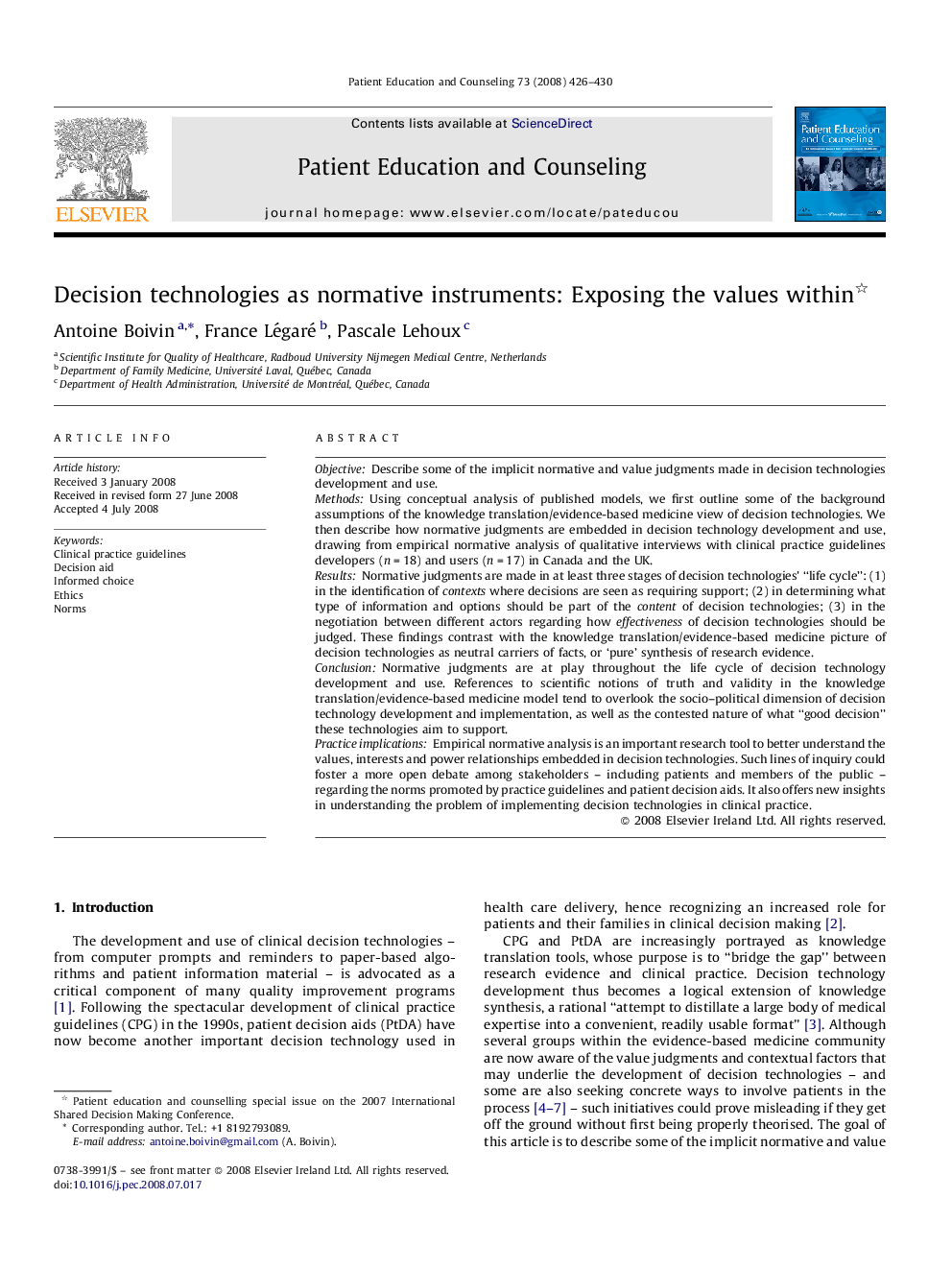| کد مقاله | کد نشریه | سال انتشار | مقاله انگلیسی | نسخه تمام متن |
|---|---|---|---|---|
| 3814079 | 1245991 | 2008 | 5 صفحه PDF | دانلود رایگان |

ObjectiveDescribe some of the implicit normative and value judgments made in decision technologies development and use.MethodsUsing conceptual analysis of published models, we first outline some of the background assumptions of the knowledge translation/evidence-based medicine view of decision technologies. We then describe how normative judgments are embedded in decision technology development and use, drawing from empirical normative analysis of qualitative interviews with clinical practice guidelines developers (n = 18) and users (n = 17) in Canada and the UK.ResultsNormative judgments are made in at least three stages of decision technologies’ “life cycle”: (1) in the identification of contexts where decisions are seen as requiring support; (2) in determining what type of information and options should be part of the content of decision technologies; (3) in the negotiation between different actors regarding how effectiveness of decision technologies should be judged. These findings contrast with the knowledge translation/evidence-based medicine picture of decision technologies as neutral carriers of facts, or ‘pure’ synthesis of research evidence.ConclusionNormative judgments are at play throughout the life cycle of decision technology development and use. References to scientific notions of truth and validity in the knowledge translation/evidence-based medicine model tend to overlook the socio–political dimension of decision technology development and implementation, as well as the contested nature of what “good decision” these technologies aim to support.Practice implicationsEmpirical normative analysis is an important research tool to better understand the values, interests and power relationships embedded in decision technologies. Such lines of inquiry could foster a more open debate among stakeholders – including patients and members of the public – regarding the norms promoted by practice guidelines and patient decision aids. It also offers new insights in understanding the problem of implementing decision technologies in clinical practice.
Journal: Patient Education and Counseling - Volume 73, Issue 3, December 2008, Pages 426–430